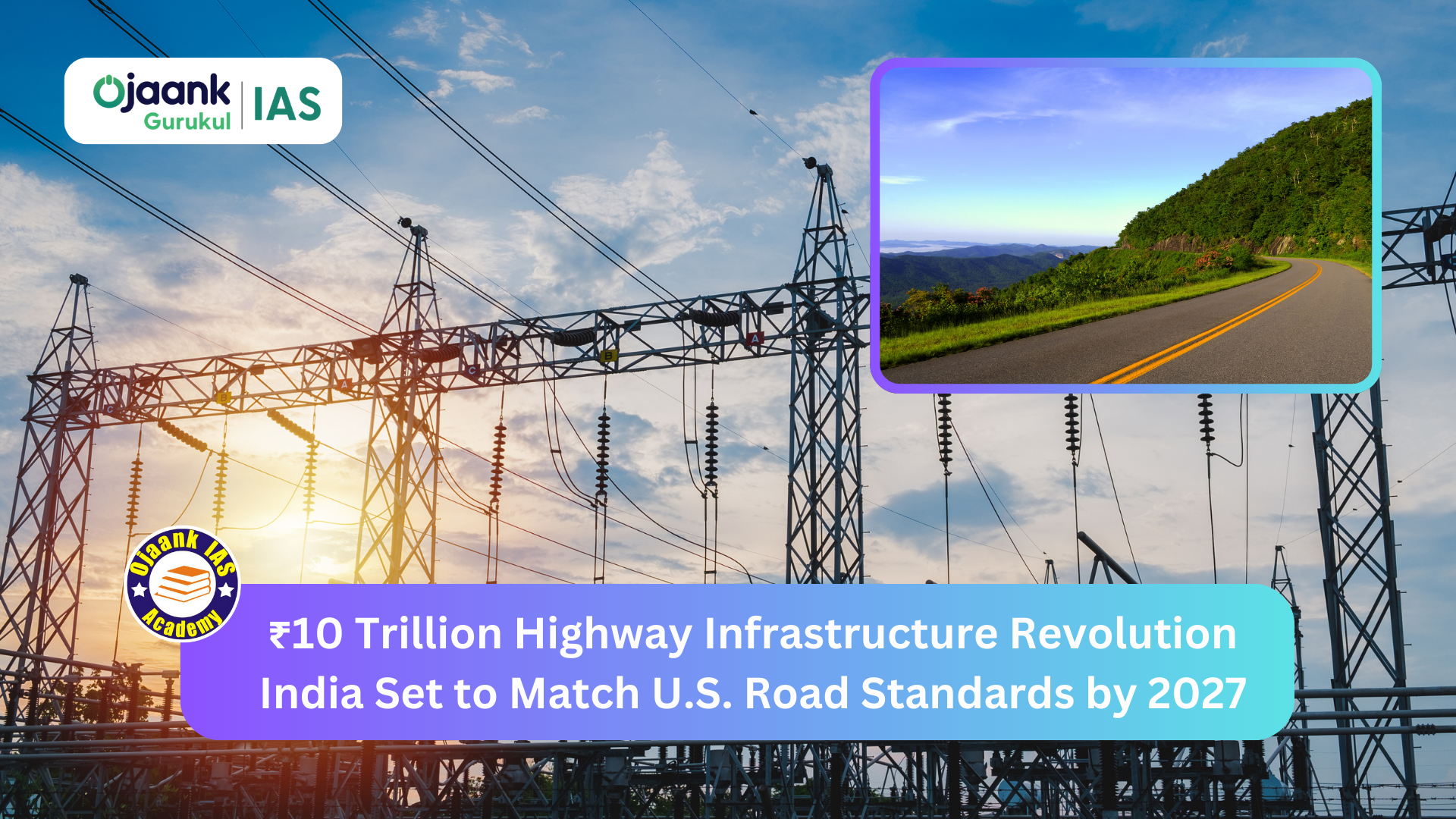₹10 Trillion Highway Infrastructure Revolution India Set to Match U.S. Road Standards by 2027

 Introduction: A New Era in Indian Road Infrastructure
Introduction: A New Era in Indian Road Infrastructure
India’s Union Road Transport Minister, Nitin Gadkari, has announced a historic initiative — an ambitious ₹10 trillion (₹10 lakh crore) investment in highways over the next 2 years. This mega plan aims to revamp Indian highways to match U.S. standards in terms of quality, safety, and connectivity.
Read: How India’s Infrastructure Push Aims to Match Global Standards – World Economic Forum
 What is the Objective of This ₹10 Trillion Plan?
What is the Objective of This ₹10 Trillion Plan?
Core Goals:
-
Complete transformation of the National Highway Network
-
Bring international-grade quality and safety features to Indian roads
-
Special focus on border states and Northeast India
-
Trigger economic growth and logistics expansion
Explore: India’s National Infrastructure Pipeline – Key Sectoral Priorities – NITI Aayog
 Where Will the ₹10 Trillion Be Invested?
Where Will the ₹10 Trillion Be Invested?
Eastern and Northeastern India get top priority:
| State | Estimated Investment |
|---|---|
| Assam | ₹57,000 crore |
| Bihar | ₹90,000 crore |
| Jharkhand | ₹53,000 crore |
| West Bengal | ₹42,000 crore |
| Odisha | ₹58,000 crore |
![]() A total of ₹3.7 trillion will be invested in just these five states.
A total of ₹3.7 trillion will be invested in just these five states.
-
Total projects: 784
-
Total highway length: 21,000 km
Read More: Northeast India: Gateway to Act East Policy – ORF Analysis
 Key Technical Upgrades & Green Highway Innovations
Key Technical Upgrades & Green Highway Innovations
-
Widening of lanes to 3.6 meters (U.S. standard)
-
Intelligent traffic management systems
-
AI-based toll collection and monitoring
-
EV charging infrastructure
-
Solar lighting and roadside tree plantations
-
Extensive construction of tunnels and bridges, especially in hilly areas
Related: Green Highways Policy – Transforming Indian Roads with Sustainability – MoRTH
 What Model Will Be Used for Implementation?
What Model Will Be Used for Implementation?
HAM Model (Hybrid Annuity Model)
-
40% cost borne by Government (in 5 parts)
-
60% cost invested by Private Developers
-
Toll revenue goes to the government
-
Government repays the developer in annuity payments over 15–20 years
Learn More: What is the Hybrid Annuity Model? – RBI’s PPP Infrastructure Guide
 Strategic and Economic Significance
Strategic and Economic Significance
-
Border security enhancement through faster troop deployment to regions bordering China, Bangladesh, and Myanmar
-
Logistics & Make in India push through better freight corridors
-
Tourism boost in Northeastern and Himalayan states
-
Large-scale employment generation in the construction and engineering sectors
Insight: How Roads Power National Security & Border Management – IDSA
 India vs. U.S.: Bridging the Highway Quality Gap
India vs. U.S.: Bridging the Highway Quality Gap
| Feature | U.S. | India (Target by 2027) |
|---|---|---|
| Lane Width | 3.6 meters | 3.5 to 3.75 meters |
| Road Quality Index Rank | Top 5 globally | Targeting Top 30 |
| Road Fatalities per million | 12 | Currently 90+, to be reduced |
| EV Charging Infrastructure | Advanced | Rapidly expanding |
 Major Expressway Projects Underway
Major Expressway Projects Underway
-
Delhi–Mumbai Expressway – 8 lanes, full launch expected by Oct 2025
-
Amritsar–Jamnagar Expressway – 1,257 km
-
Raipur–Visakhapatnam Expressway – 465 km
-
Varanasi–Ranchi–Kolkata Corridor – 650 km
-
Ganga Expressway (U.P.) – 594 km
 New-Age Transportation: India’s Electric Mass Transit Pilot
New-Age Transportation: India’s Electric Mass Transit Pilot
A new pilot project in Nagpur:
-
135-seater EV/hydrogen bus being tested
-
Operated via BOT model
-
If successful, to be replicated across India — enabling smooth and eco-friendly inter-city travel
 Conclusion
Conclusion
This ₹10 trillion highway masterplan is not just about building roads — it's about rebuilding India’s transport backbone. From smart highways to greener energy, from strategic logistics to world-class expressways, this is New India's bold step into global infrastructure leadership.
If executed successfully, India could soon rise into the top ranks of global road infrastructure quality indexes — a feat that will redefine mobility for over a billion people.